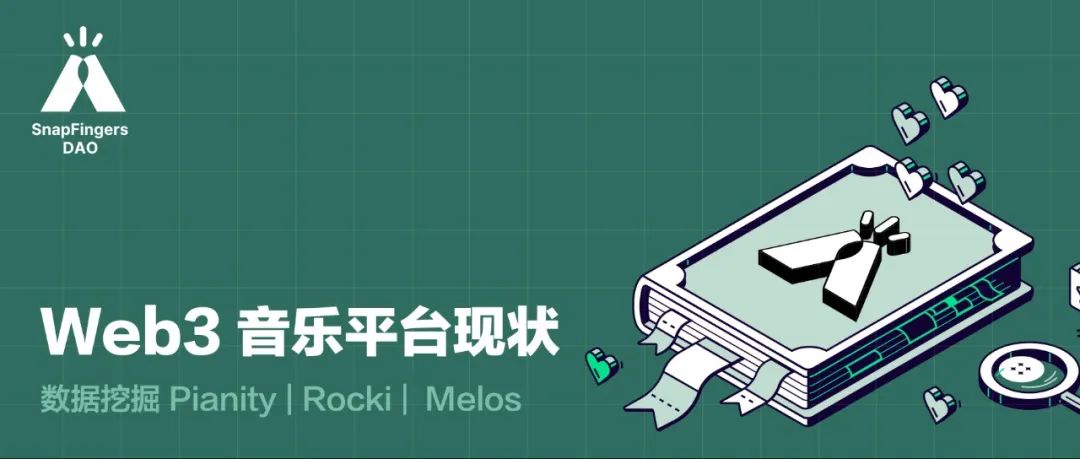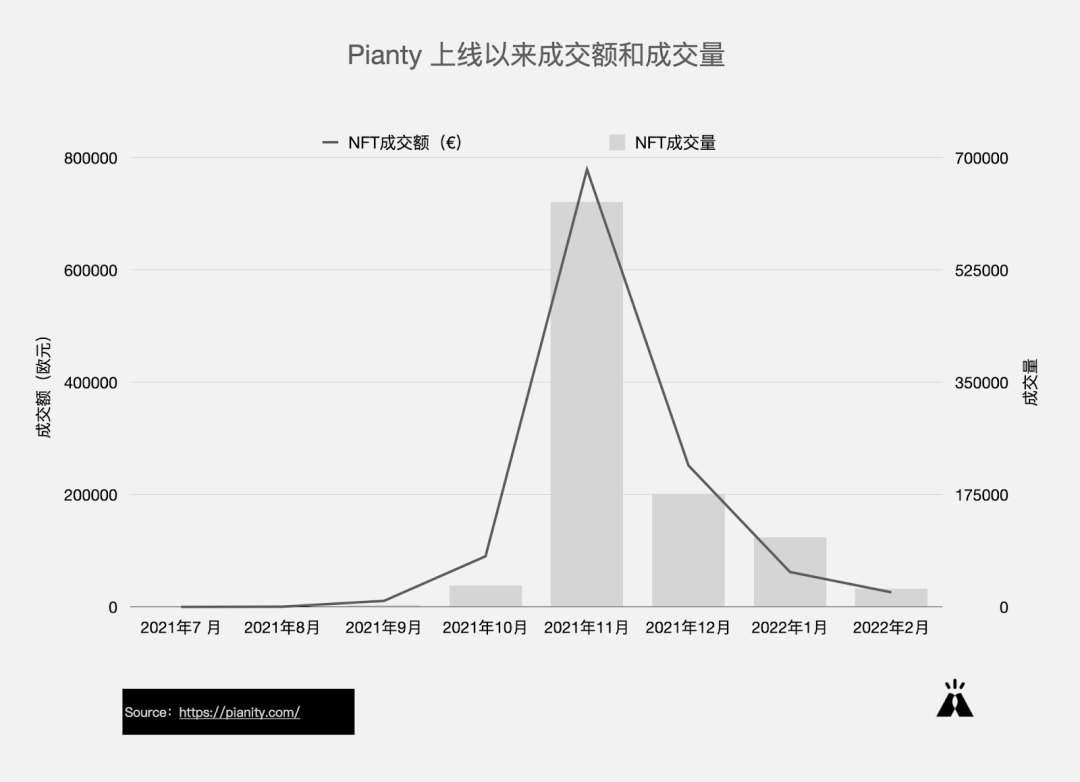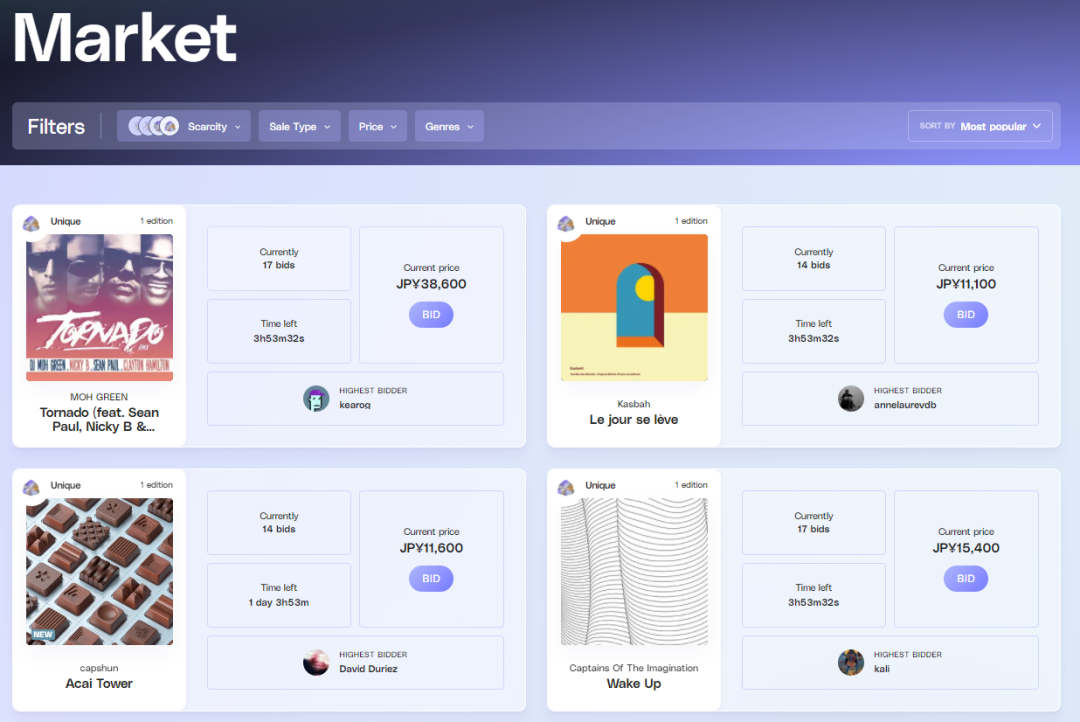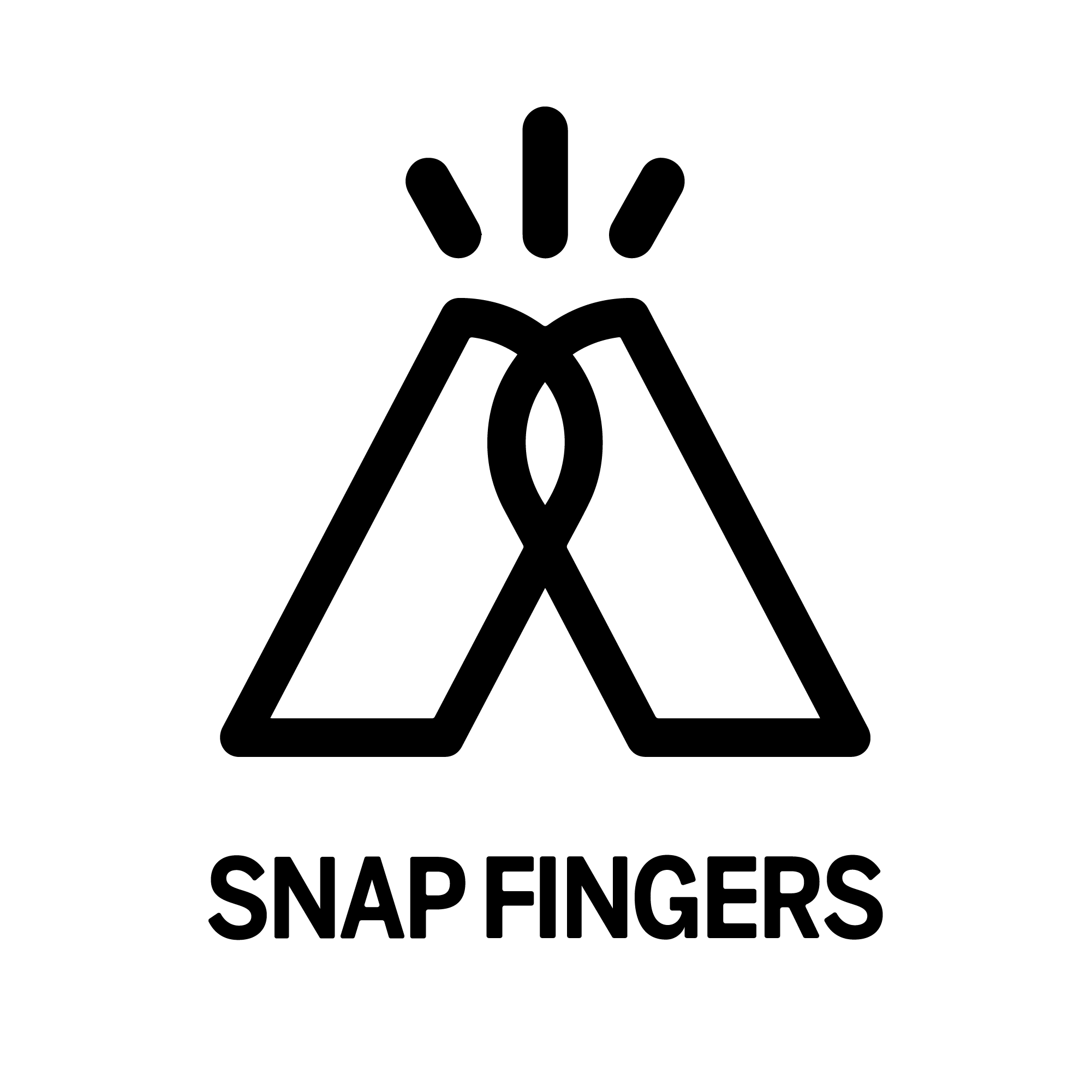A brief analysis of the development status of the Web3 music track
Researcher: AlvinYa#2584 & uzan#1722 | SnapFingersDAO builders

Since the invention of recording in 1877, the music industry has evolved hand in hand with technology. From physical records to streaming media, every technological upgrade brings a broader market to the music industry. What changes will Web3 bring to the music industry? Since the end of last year, more and more people have paid attention to Web3 music. It is generally believed that concerts are the next hot spot after image NFT. How are these music projects developing now? Let’s take a closer look by crawling official data.
Before starting, let’s briefly sort out the pain points of the current traditional music industry:
Creators have too little control over copyright andDifficult to trace the source. According to the data of the Alpha case database, in the statistics of music copyright-related cases, the number of cases involving intellectual property rights and infringement disputes accounted for more than 97%.
Creators are paid too little.According to a 2019 survey by Soundcharts, Spotify, Apple Music, and Google Play pay creators about $0.003~0.005 per play, and music creators can only get 13% of the total platform revenue.
The distribution channel of works is monopolized.Distribution rights are basically in the hands of third-party companies such as streaming media platforms and record companies.
secondary title
official website

* Announced a $6.5 million seed round on Tuesday, March 2.
Each NFT on Pianity has a corresponding issuance quantity and rarity level. The form of NFT is unlimited and very flexible. The quantity and price can be determined by musicians. Pure NFT does not enjoy the dividends of music copyrights and does not constitute a competitive relationship with traditional streaming platforms. Its trading market supports buy-it-yourself and auction models. Musicians’ works need to be “listed” before they are put on the shelves. Fans can use PIA tokens to vote for their favorite works, and the works that rank first can be put on the shelves for sale.
The project issued $PIA, the circulating token on the platform, and adopted a strong token incentive model. Users' purchase and holding behaviors will be continuously motivated through $PIA. Currently $PIA is priced at $0.1, but it cannot be traded yet, and it is not the real price.

Since its launch in July 2021, the trading market in Pianty experienced a significant decline in transaction volume and transaction value after the NFT boom in November. Of course, this is related to the popularity and market sentiment of the entire NFT industry.
Although, Pianity's transaction size will fluctuate with the sentiment of the entire NFT market. However, as the positioning of the NFT trading platform on the vertical track,In the future, user traffic acquisition, artist services, high-quality NFT supply, and platform operations will all be no small challengessecondary title
official website

If Pianity is positioned as a pure music NFT trading platform, then Rocki is more like a service platform for music creators. The operating logic of the platform and the business model of the project are more like streaming media platforms that tend to serve creators in the Web2 era. It just endows the token with Web3 attributes on the traditional streaming media platform model.
Unfortunately,secondary title
official website

Melos Studio is a music creation platform that supports secondary creation. Its main highlight is non-algorithm-generated music secondary creation, and it has strong DeFi and community autonomy attributes. The product is in a very early stage, and the only functions currently available are music NFT listening and purchase. All music can be listened to for free. NFT holders have no special rights such as intellectual property rights, only personal use rights and transfer rights, and the transaction volume is relatively small.
Users can upload a piece of music and generate an NFT (New Forge); other users can make secondary creations on this basis: copy this NFT fine-tuning into a new NFT, or mix two NFTs into a new NFT ( Jam Forge). Each NFT will have a corresponding MusicBlock, which records the DNA and Gen of music. DNA contains information such as its author, traceable music, etc. Gen contains the number of generations. For example, the music NFT uploaded by the user is Gen0, the NFT created based on its fine-tuning is Gen1, the NFT recreated based on Gen1 is Gen2, and so on. In this way, users are encouraged to rely on platform music resources for secondary creation. At the same time, Melos has completed the process of confirming the right to use through block traceability.
Melos has its own platform governance token $Melos, which is mainly used for incentives and governance. Various activities of users on the platform will be motivated by tokens, including staking music NFTs, holding music NFTs, trading music NFTs, and generating Jam Forge NFTs.text
Summarize
text
text
As a vertical NFT trading platform, in the face of the current mature and relatively stable multi-category or even full-category NFT trading platform, the siphon effect on the flow and supply side, scale advantages and even market pricing power will all be music NFT track entrepreneurs. problems that must be faced in the future.



